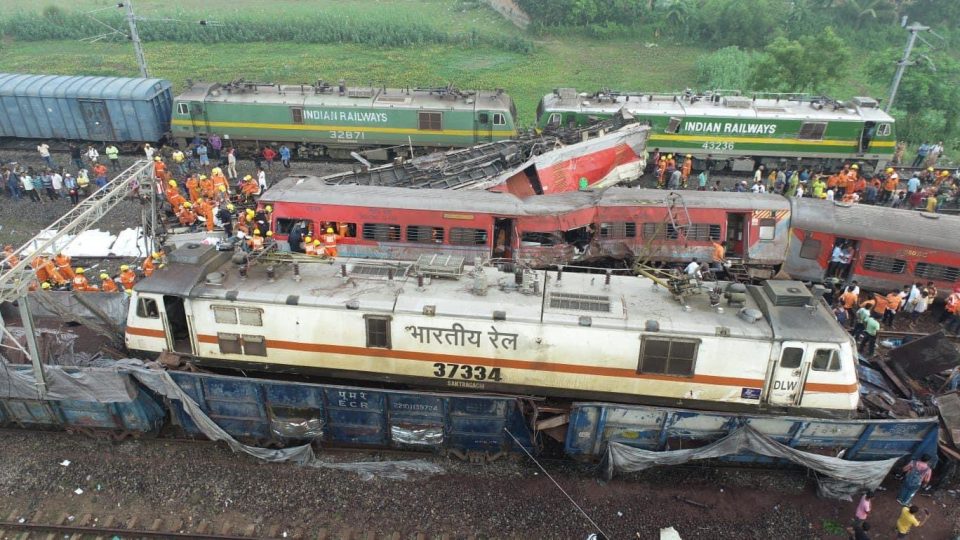
Odisha train accident | Dissent note defies ‘signal failure’ claim in probe report

It seems an interdepartmental fight has broken out over the cause of one of India’s deadliest rail disasters amid allegations against the Narendra Modi government of undermining safety measures.
A senior railway engineer who was part of the team that conducted the preliminary investigation into the cause of the triple train collision at Odisha’s Bahanaga on Friday (June 2) gave a “note of dissent” on the probe report, The Federal has learnt.
The probe report has blamed signal failure for the catastrophe, stating the Chennai-bound Coromandel Express deviated from the main up line as the tracks at Point No. 17-A were set for an up-loop line where a goods train was standing.
Point 17-A can be roughly defined as a machine that helps trains change tracks at a crossing.
Also read: Odisha train tragedy: Why was Coromandel Express’ Point 17-A set for the loop line?
Why the dissent note?
The senior engineer, however, differed with the findings, sources told The Federal. “I did not agree with Point No. 4 (of the report) that mentioned that Point 17-A was found to be set for an up-loop line,” the engineer stated in his dissent note.
The main reason for his disagreement is that the data logged at the control panel showed Point 17-A was set for a normal route that is up the main line, sources said.
“It may (have been) reversed after the derailment,” the official reportedly stated in his note signed on May 3, a day after the accident.
“The point of derailment (was) before the LC (level crossing) gate 95 that is before point 17-A,” the senior engineer stated in his note.
The contention of the senior engineer virtually ruled out any signal failure for the accident, explained a railway source.
Also read: Odisha train crash due to signalling issue, not overspeeding: Railway Board official
The safety issue
This note of dissent could be a valuable defence for the railway ministry, which is under attack for “poor upkeep” of railway infrastructure.
Congress MP and leader of the Opposition in the Lok Sabha, Adhir Ranjan Chowdhury, on Sunday (June 4) blamed the ministry for the “signal failure”.
“You (the ministry) have destroyed the railway signal system, the safety mechanism,” Chowdhury, also a former minister of state for railways, said at a press conference at Balasore on Sunday.
Modern trains, ancient tracks
Railway sources admit that the British-era railway network of the country needs a major overhaul and upgrade.
Even the much-hyped Vande Bharat Express trains are running without the upgrade of tracks needed for such semi-high-speed trains.
Also read: Odisha train accident: How an engine change saved 110 pilgrims from disaster
Due to the poor conditions of the railway tracks, the Vande Bharat trains are running at much lower speeds than the permissible limit of 130 km per hour, the railway ministry stated in response to an RTI filed by an activist from Madhya Pradesh.
The semi-high-speed train can reach a top speed of 180 km per hour.
The Kavach question
Due to the alleged paucity of funds, the much-needed installation of the anti-collision device christened “Kavach” could not be started across the country’s railway networks, sources said.
At present, it covers only 1,455 route kilometres on South-Central Railway. The target is to extend it to another 2951 Rkm on Delhi-Mumbai and Delhi-Howrah sections by next year.
According to sources, a Railway Board member met representatives of a Bengaluru-based private company, Elena Geo systems, on the sidelines of World Telecom Day on May 17 and sought a detailed presentation on the Navigation with Indian Constellation (NavIC), India’s home-grown answer to the US-made GPS.
Kavach runs on GPS, which is quite expensive. Hence, the railway ministry is looking for an economically viable alternative, considering its budget crunch.
Also read: Odisha train accident: Steadily falling railway safety fund proves cataclysmic
The Indian government started the process of developing the anti-collision device under the Congress-led UPA regime in 2012.
The first trail run was made in 2014. But the Railways, after a long wait, adopted it only in March last year.
The cost of the delay was those nearly 300 lives lost in Friday’s rail accident.


